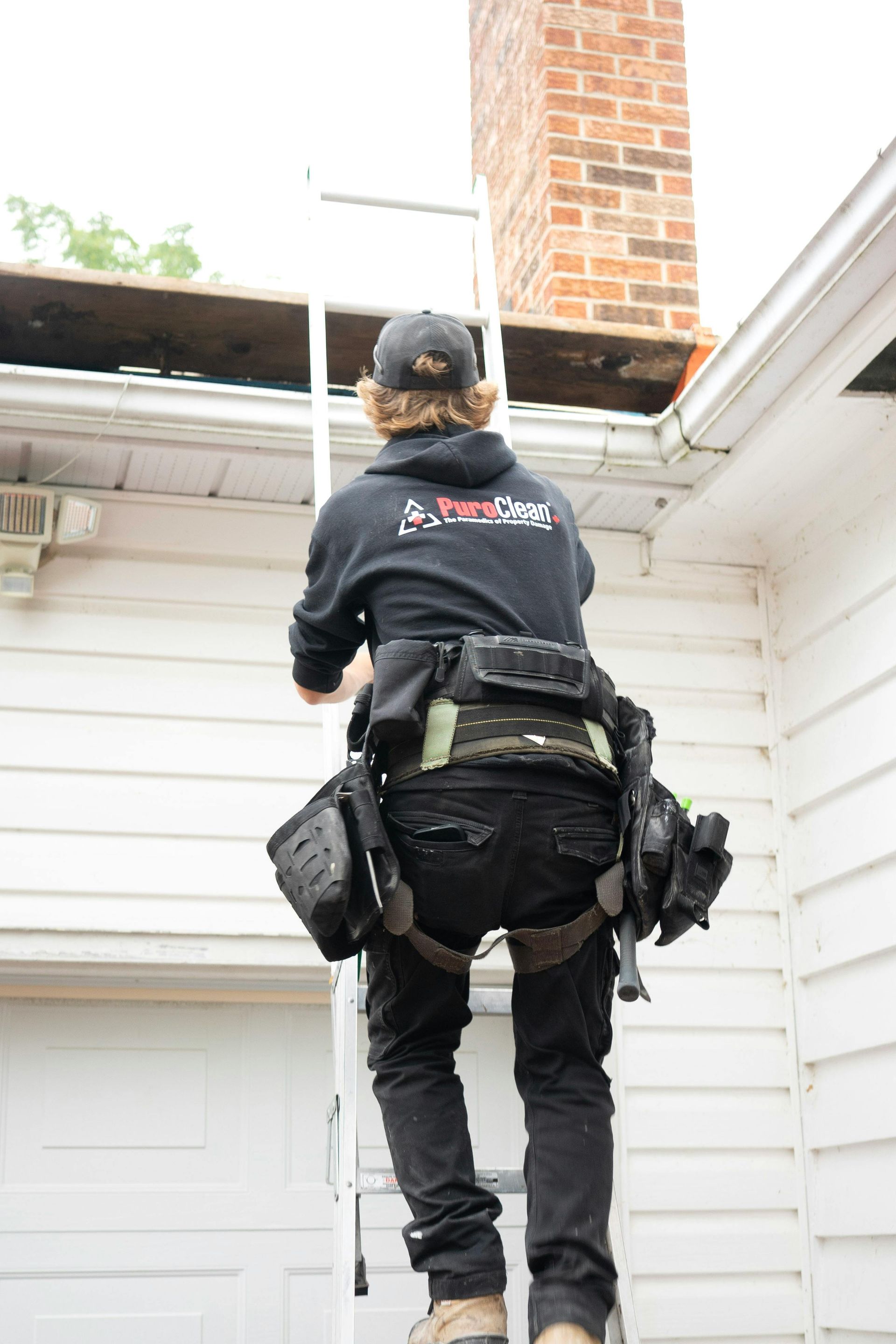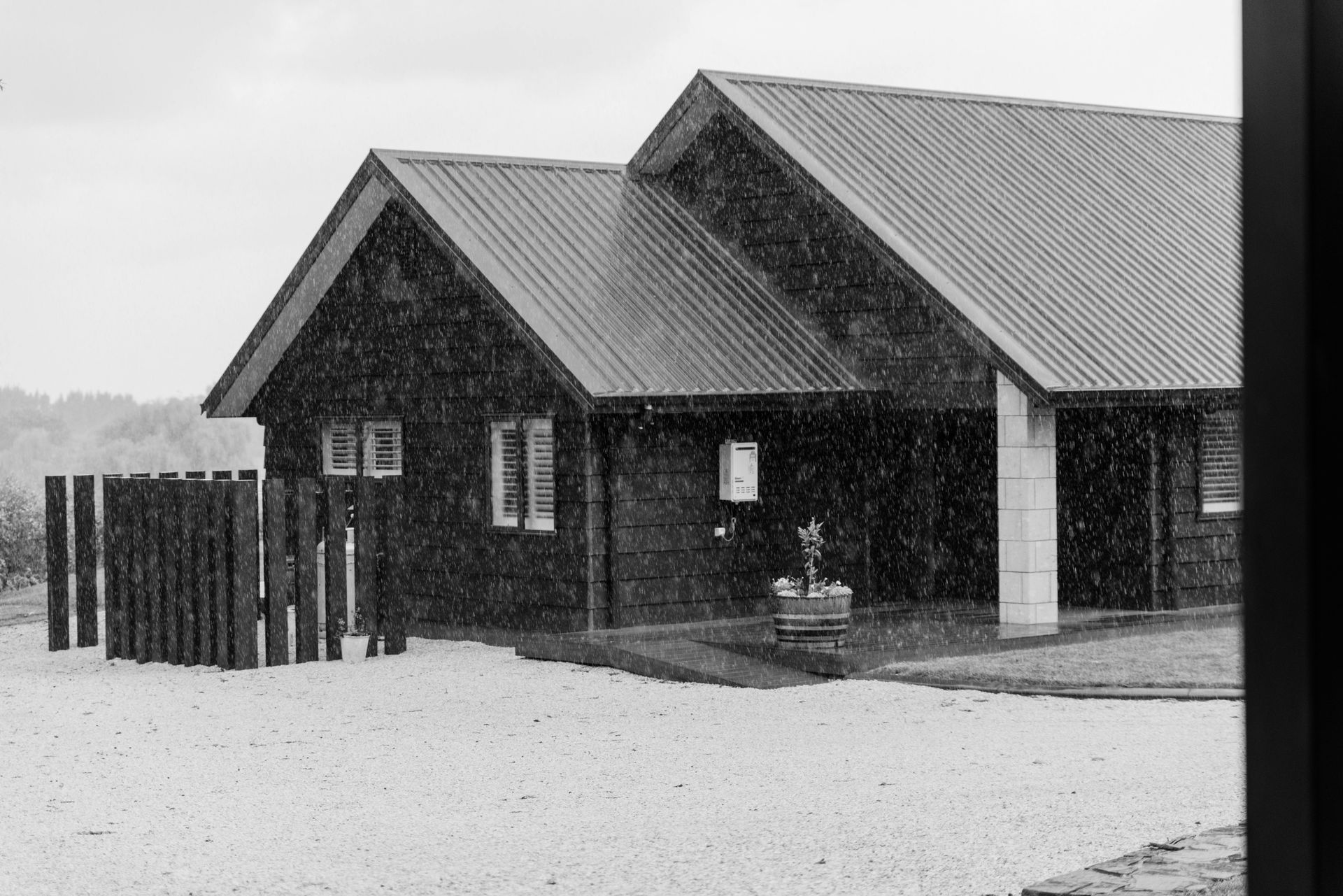How Gutters Protect Your Foundation From Water Damage
Water is essential for life, but when it comes to your home, it can be a silent destroyer. Poor water management around your property can lead to significant damage, particularly to your foundation. Gutters play a critical role in directing rainwater away from your home, safeguarding its structural integrity. Without proper gutter systems in various areas, water can pool around your foundation, causing cracks, erosion, and costly repairs. This article explores how gutters and roof repair protect your foundation from water damage, why they are essential for homeowners, and practical steps to maintain them. By understanding the importance of gutters, you can take proactive measures to protect your home and avoid expensive fixes.
Key Takeaways
- Gutters channel rainwater away from your foundation, reducing the risk of water-related damage.
- Properly functioning gutters prevent soil erosion around your home’s base.
- Clogged or damaged gutters can lead to water pooling, which may weaken your foundation.
- Regular gutter maintenance is essential to ensure long-term protection.
- Installing quality gutters can save homeowners from costly foundation repairs.
- Professional inspections can identify gutter issues before they impact your foundation.
The Role of Gutters in Home Protection
Gutters are an integral part of your home’s exterior drainage system. They collect rainwater from your roof and direct it through downspouts to a safe distance from your foundation. This process prevents water from pooling around your home’s base, which can cause significant structural issues over time. By controlling the flow of rainwater, gutters help maintain the stability of the soil surrounding your foundation, reducing the likelihood of erosion or settling.
Without gutters, rainwater would cascade off your roof and land directly on the ground near your home. This can oversaturate the soil, leading to uneven settling or shifting of the foundation. Over time, these issues can result in cracks in walls, uneven floors, or even major structural damage. Gutters act as a first line of defense, ensuring water is managed effectively and diverted away from vulnerable areas.
In addition to protecting the foundation, gutters also help preserve other parts of your home, such as siding, windows, and landscaping. By preventing water from pooling or splashing against exterior surfaces, they reduce the risk of mold growth, wood rot, and other moisture-related problems.
How Water Damage Affects Your Foundation
Water is one of the most common causes of foundation damage. When water accumulates near your home’s foundation, it can lead to several problems:
- Soil Erosion: Excessive water can wash away the soil supporting your foundation, causing it to shift or settle unevenly.
- Hydrostatic Pressure: When soil becomes oversaturated, it exerts pressure against your foundation walls, potentially causing cracks or bowing.
- Cracks and Leaks: Prolonged exposure to water can weaken concrete, leading to cracks that allow water to seep into your basement or crawlspace.
- Mold and Mildew: Excess moisture can promote mold growth, which can compromise indoor air quality and structural materials.
These issues can escalate quickly, turning minor problems into costly repairs. For example, foundation cracks may require professional sealing or, in severe cases, underpinning to stabilize the structure. By directing water away from your home, gutters help mitigate these risks and maintain the long-term health of your foundation.
Types of Gutters and Their Effectiveness
The type of gutter system you choose can impact its ability to protect your foundation. Here’s a breakdown of common gutter types and their features:
| Gutter Type | Material | Pros | Cons |
|---|---|---|---|
| Seamless Aluminum | Aluminum | Durable, rust-resistant, low maintenance | Higher initial cost |
| Vinyl | PVC | Affordable, easy to install | Less durable, may crack in extreme cold |
| Steel | Galvanized Steel | Strong, long-lasting | Prone to rust without proper coating |
| Copper | Copper | Aesthetically pleasing, durable | Expensive, requires professional installation |
- Seamless Aluminum Gutters: These are custom-made to fit your home, reducing the risk of leaks at joints. They are a popular choice for their durability and low maintenance.
- Vinyl Gutters: Lightweight and budget-friendly, vinyl gutters are easy to install but may not withstand harsh weather conditions as well as metal options.
- Steel Gutters: These are robust but require regular maintenance to prevent rust, especially in humid climates.
- Copper Gutters: While costly, copper gutters offer a premium look and excellent longevity, making them a worthwhile investment for some homeowners.
Choosing the right gutter type depends on your budget, climate, and aesthetic preferences. Regardless of the material, ensure your gutters are properly sized to handle the volume of rainwater in your area.
Oversized or undersized gutters can lead to overflow or inefficiencies, reducing their ability to protect your foundation.
Common Gutter Problems and Their Impact
Even the best gutter systems can fail if not properly maintained. Common issues that can compromise your gutters’ ability to protect your foundation include:
- Clogging: Leaves, twigs, and debris can accumulate in gutters, blocking water flow and causing overflow. This can lead to water pooling near the foundation.
- Leaks: Cracks or loose joints in gutters can allow water to escape, reducing their effectiveness and directing water toward your home’s base.
- Improper Slope: Gutters must be angled correctly to ensure water flows toward downspouts. Poorly sloped gutters can trap water, leading to overflow.
- Detached Gutters: Gutters that pull away from the roofline due to loose fasteners or heavy water flow can fail to collect rainwater properly.
These problems can have a direct impact on your foundation. For instance, clogged gutters may cause water to spill over and pool near your home, saturating the soil and increasing the risk of erosion or
hydrostatic pressure. Regular inspections and maintenance can help identify and address these issues before they cause significant damage.
Maintenance Tips for Optimal Gutter Performance
To ensure your gutters effectively protect your foundation, regular maintenance is essential. Here are practical steps to keep your gutter system in top condition:
- Clean Gutters Regularly: Remove debris such as leaves and twigs at least twice a year, ideally in spring and fall. Use a ladder and gloves, or hire a professional for safety.
- Inspect for Damage: Check for cracks, rust, or loose fasteners during routine cleanings. Address minor issues promptly to prevent larger problems.
- Ensure Proper Slope: Verify that gutters are angled toward downspouts to promote proper water flow. A professional can adjust the slope if needed.
- Install Gutter Guards: These devices can reduce debris buildup, making maintenance easier and preventing clogs.
- Check Downspouts: Ensure downspouts direct water at least 5-10 feet away from your foundation. Consider adding extensions or splash blocks for better drainage.
- Schedule Professional Inspections: A professional can identify hidden issues, such as improper installation or structural weaknesses, that may affect performance.
By incorporating these maintenance practices, you can extend the lifespan of your gutters and enhance their ability to protect your foundation.
The Cost of Neglecting Gutters
Neglecting gutter maintenance can lead to significant financial consequences. Foundation repairs are among the most expensive home repairs, often costing thousands of dollars depending on the severity of the damage. For example:
- Minor Crack Repairs: Sealing small foundation cracks may cost $500-$1,000.
- Underpinning: Stabilizing a foundation with piers can range from $10,000 to $30,000 or more.
- Waterproofing: Installing drainage systems or waterproofing a basement can cost $5,000-$15,000.
In contrast, gutter maintenance is relatively affordable. Routine cleaning typically costs $100-$300 per session, and installing gutter guards may range from $500 to $2,000, depending on your home’s size. Investing in proper gutter care and
knowing when it’s time can save you from these costly repairs, making it a cost-effective way to protect your home’s foundation.
Frequently Asked Questions
How often should I clean my gutters to protect my foundation?
Cleaning your gutters at least twice a year, in spring and fall, is recommended. Homes with overhanging trees may require more frequent cleanings to prevent clogs.
Can I install gutters myself, or should I hire a professional?
While DIY installation is possible for some gutter types, professional installation ensures proper sizing, slope, and attachment, maximizing protection for your foundation.
What are gutter guards, and are they worth it?
Gutter guards are covers that reduce debris buildup in gutters. They can be worth the investment for homes in areas with heavy foliage, as they minimize maintenance needs.
How do I know if my gutters are causing foundation problems?
Signs include pooling water near your foundation, visible soil erosion, or cracks in your basement walls. Regular inspections can help identify issues early.
What should I do if my gutters are overflowing?
Check for clogs and clear them promptly. If overflow persists, inspect for improper slope or damage and consider consulting a professional for repairs.
Final Thoughts
Gutters are a vital component of your home’s defense against water damage. By directing rainwater away from your foundation, they prevent soil erosion, hydrostatic pressure, and structural issues that can lead to costly repairs. Choosing the right gutter system, maintaining it regularly, and addressing issues promptly can save you from significant expenses and preserve your home’s value. Whether you’re a new homeowner or looking to improve your property’s resilience, prioritizing gutter care is a smart investment. Take the time to inspect your gutters, schedule an appointment with a professional, and consider professional assistance to ensure your home remains protected for years to come.


